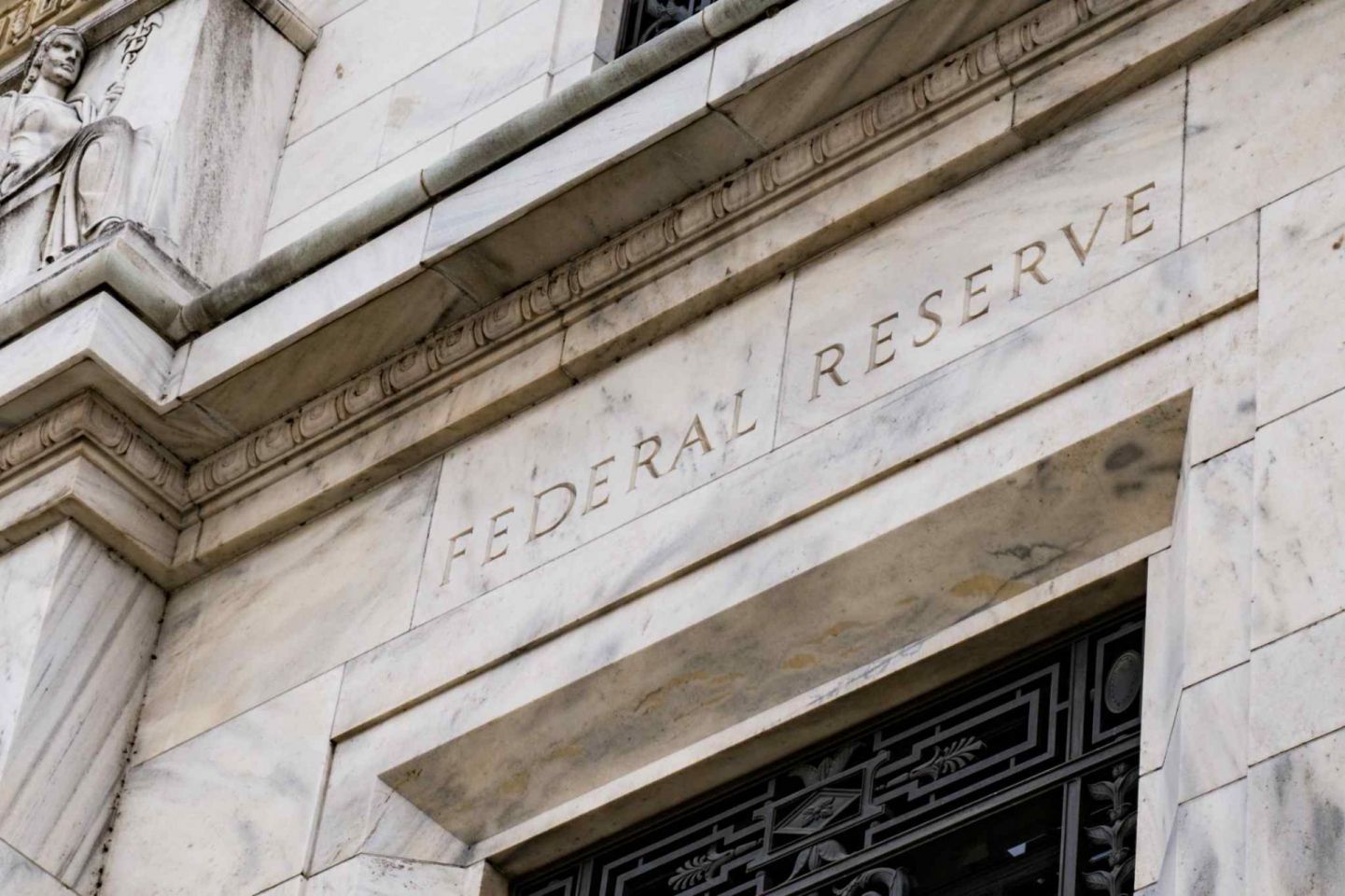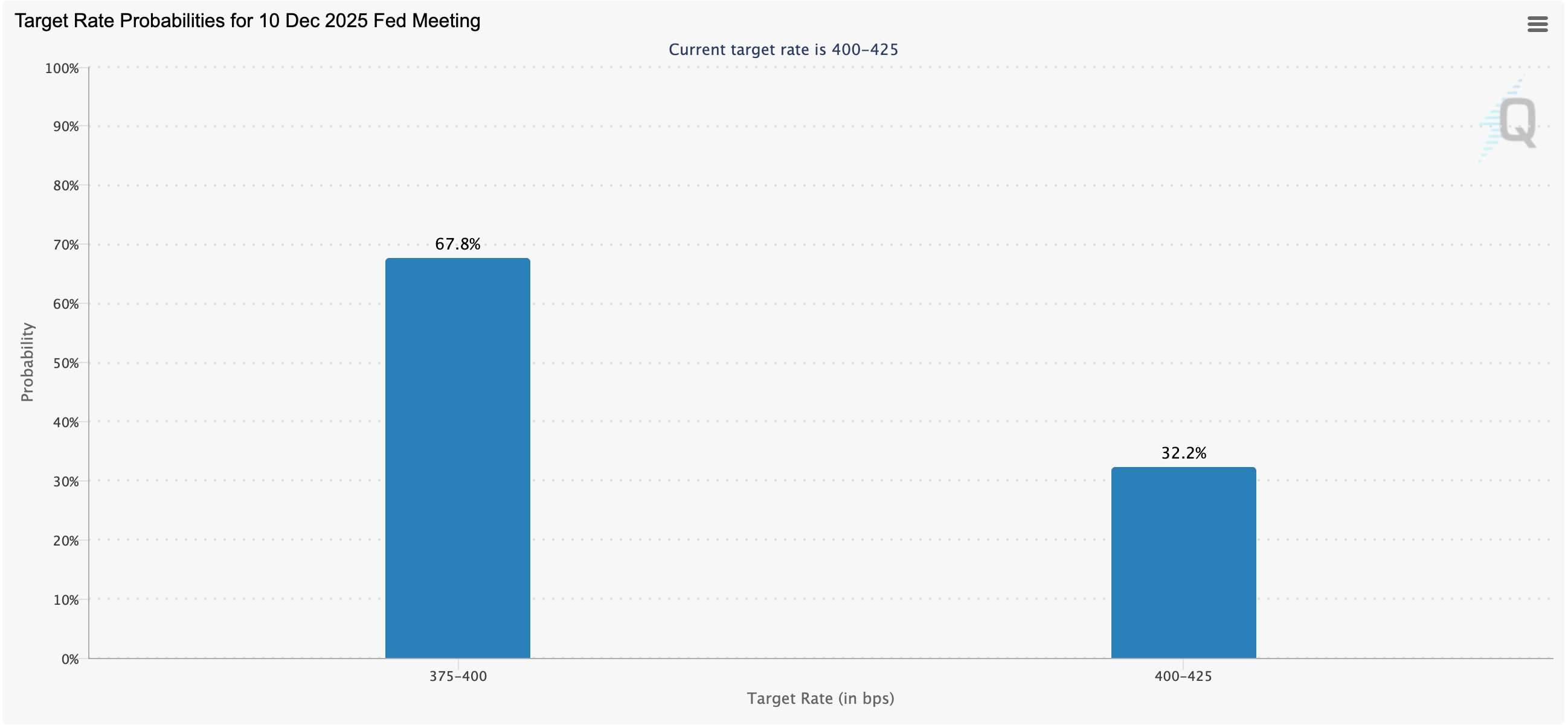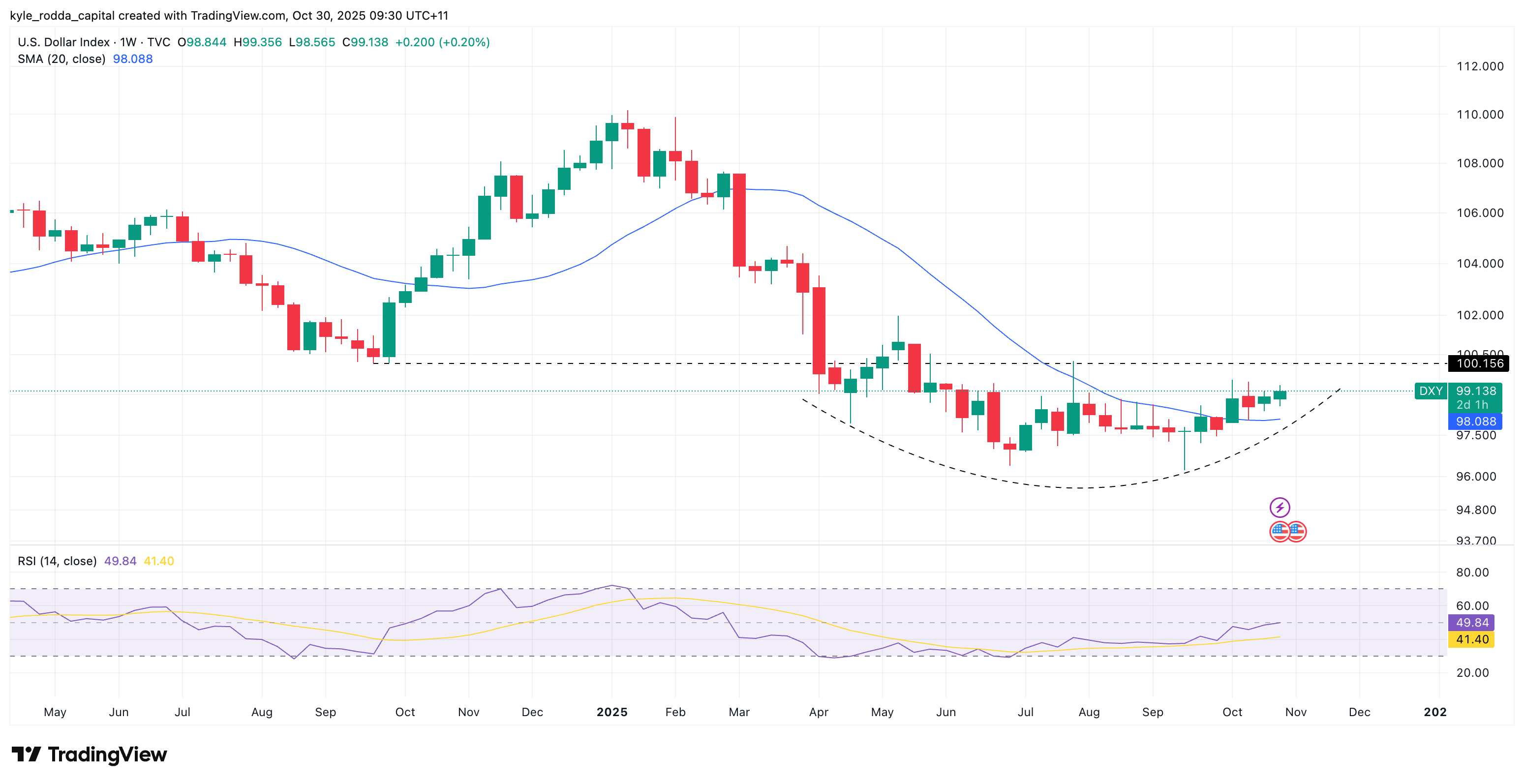The US Federal Reserve cuts rates as expected but Chair Powell delivers hawkish message
The US Federal Reserve cut the Federal Funds Rate by 25 basis points
The US Federal Reserve cut the Federal Funds Rate by 25 basis points to a range of 3.75% - 4.00% as expected but delivered a warning about future cuts.
A divided Fed says a December cut is no guarantee
A December rate cut by the US Federal Reserve is no guarantee. That’s the message from the Fed after the central bank cut rates as expected but pushed back on the assumption that another cut at the next meeting is locked-in. The decision itself revealed a divided Fed, with ten members in favour of a cut, but one a hold, and one – unsurprisingly, Stephen Miran – advocating for a 50 point move. But the critical detail was in the press conference, when Chairperson Jerome Powell stated that a December cut is “not a foregone conclusion”. That comment dragged out of the market about a one-quarter of the cut baked in for the December meeting, putting upward pressure on yields and the US Dollar. The dynamic kicked gold prices lower – with the yellow metal having a horror week as geopolitical, trade and, now, monetary policy tailwinds diminish. Despite the hawkish cut, the equity market basically shrugged off the news. That wasn’t entirely unexpected, given the implied move for the S&P 500 before the event was roughly 1%.

(Source: CME Group)
The Fed battles both sides of its mandate amid lack of official data
The Fed’s problem – and the reason for its equivocation – now has three angles. A weakening labour market, with the causes for the deterioration a point of contention. Sticky inflation that’s moving away from target, albeit slower than feared and in line with what the central bank has forecast. And a dearth of data because of the US Government shutdown, although the central bank has alternative data sources and teams of people to monitor the economy. Essentially, by the Fed’s own admission, with the economy evolving in a way that’s putting pressure on both sides of the central bank’s mandate. The Fed appears to want to maximise optionality, as well as pull some of the cuts baked into the market that could already be having a stimulatory effect on the economy.
US Dollar rallies as technicals point to potential bottom
The US Dollar Index is exhibiting technical signs of bottoming out. The DXY is forming a rounding base pattern, indicating that the 10% peak to trough decline in the Greenback this year could be reversing. A meaningful tailwind for the US Dollar would be if the interest rate futures curve continues to price out Fed rate cuts in December and into 2026, perhaps owing to resurgent growth and/or sticky inflation in the US. A decisive break of 100 on the US Dollar Index would be a bullish signal and could possibly indicate a trend reversal.
 (Source: Trading View)
(Source: Trading View)
(Past performance is not a reliable indicator of future results)